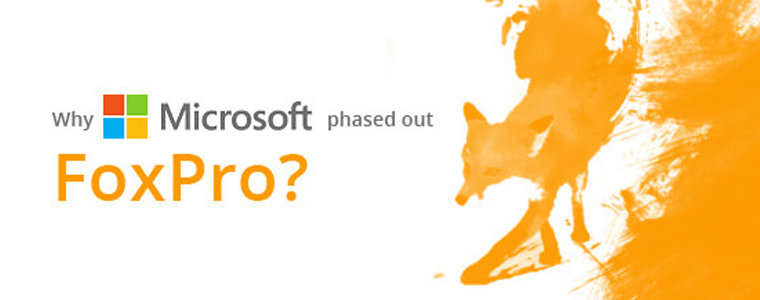
By Imran Salahuddin | Published on September 8th, 2015 | Last updated on May 19th, 2025 |
Visual FoxPro (VFP) was once a powerful and popular development platform embraced widely in the late 90s and early 2000s for database management and application development. However, as technology evolved, Microsoft made a strategic decision to phase out VFP and focus its efforts on the .NET Framework. This blog explores why VFP was phased out, the decline in Visual FoxPro sales, the reasons behind migrating from VFP to .NET, and what the migration means for organizations relying on legacy VFP applications.
Visual FoxPro originated from FoxPro Technologies, a company Microsoft acquired in the 90s to solidify its position in the xBase database market. Initially, VFP was a robust product with a loyal developer base. However, the rapid growth of client-server architectures and the rise of newer tools like Visual Basic and PowerBuilder shifted the landscape. Microsoft was also keenly developing its server infrastructure, including SQL Server and the Windows NT operating system.
As client-server technologies gained traction, VFP’s relevance began to wane. The xBase technology market itself was in decline, leading to a noticeable drop in Visual FoxPro sales. Additionally, Microsoft’s own newer technologies, such as VB, SQL Server, and Access, began to overshadow VFP. The company increasingly prioritized these for their broader ecosystem and future growth potential.
One of the critical technical challenges that led to VFP being phased out was the limitation of its 32-bit architecture. To keep VFP relevant and competitive, Microsoft would have needed to develop a 64-bit version, which required a complete rewrite of the FoxPro codebase—a costly and resource-intensive undertaking that was not justifiable given the product’s declining market share.
As newer technologies emerged and developers shifted their focus to the .NET Framework and related tools, Visual FoxPro sales declined steadily. The competition was not only external but also internal to Microsoft, where .NET represented the future of application development. This internal competition effectively limited VFP’s market growth as customers and developers migrated to platforms that promised better support, advanced features, and integration with other Microsoft technologies.
Microsoft’s decision to stop further development and official support for Visual FoxPro was driven by these market dynamics and strategic priorities. Ending VFP support encouraged users to consider migration to the more modern and scalable .NET framework.
The migration from Visual FoxPro to .NET is motivated by several compelling reasons:
The fundamental reason for transitioning from VFP to .NET is strategic evolution. Microsoft’s vision for the future involved technologies that are scalable, secure, and supported for the long term. While Visual FoxPro served its purpose during its heyday, the technology could not keep pace with modern software demands, 64-bit computing, and enterprise requirements.
For businesses, the VFP to .NET migration is not just a technical upgrade but a vital move to stay competitive, reduce maintenance overhead, and leverage the benefits of the latest development platforms.
Microsoft’s decision to phase out Visual FoxPro was a natural progression aligned with changing technology trends. The decline in VFP sales and the rising prominence of .NET underlined the shift in focus. For organizations still relying on VFP applications, migrating to .NET is a wise and necessary step that ensures longevity, enhanced functionality, and alignment with modern IT ecosystems.
If you are considering migrating your legacy VFP applications, understanding these reasons can help you make an informed decision and plan a successful transition to the .NET framework. Contact us today to learn more.